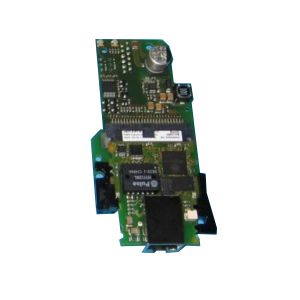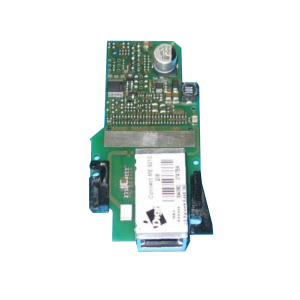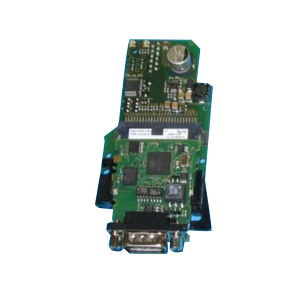The Datalogic Matrix 300N™( DL-Code) is an ultra-compact image-based bar code reader designed for performance on high speed and Direct Part Marking (DPM) applications. The Matrix 300N™ (DL-Code) is power by the new software DL.CODE, offering maximum customer ease of use.
End of life (EOL) – See related product replacements below
The Datalogic Matrix 300N™ (DL-Code) combines a high resolution sensor with ultra-fast image acquisition: 1.3 megapixels, 60 frames per second. The optical system incorporates a liquid lens module for the electronic control of the focus. As result the reader offers automatic focus adjustment without the addition of moving parts.
The integrated illuminator is embedded over the entire front surface of the reader. This innovative design results in bright and uniform illumination of the bar code. The lighting design uses both bright field and dark field patterns which provide perfect illumination on normal, etched, highly reflective or textured surfaces
With exceptionally small physical dimensions and rotating connector, the Datalogic Matrix 300N™ DL-Code can be easily integrated into the tightest spaces.
The Power over Ethernet (POE) option is one of the unique cost effective features, power and communication is provided to the reader through a standard single Ethernet connection.
The Datalogic Matrix 300™ (DL-Code) is the most cost effective solution for bar code imagers, providing onboard PROFINET-IO and eliminating external communication boxes or converters. The Matrix 300™ (DL-Code) interfaces directly with a PROFINET enabled PLC, reducing the complexity and cost of the solution. The M12, 4 pole connection sets a standard that allows for easy integration into existing systems.




Manual Adjustable Focus Models 9mm


Manual Adjustable Focus Models 12mm


Manual Adjustable Focus Models 16mm


Scanner Device only, additional accessories are required.

937600106
Contact us for stock availability

937600105
Contact us for stock availability

937600104
Contact us for stock availability

937600103
Contact us for stock availability

937600102
Contact us for stock availability

937600101
Contact us for stock availability

937600097
Contact us for stock availability

937600090
Contact us for stock availability

937600089
Contact us for stock availability

937600088
Contact us for stock availability

937600086
Contact us for stock availability

937600085
Contact us for stock availability

937600084
Contact us for stock availability

937600082
Contact us for stock availability

937600081
Contact us for stock availability
Contact for order requests

937600080
Contact us for stock availability
Contact for order requests

937600074
Contact us for stock availability

937600072
Contact us for stock availability

937600070
Contact us for stock availability
Contact for order requests

937600063
Contact us for stock availability

937600062
Contact us for stock availability

937600059
Contact us for stock availability

937600058
Contact us for stock availability

937600055
Contact us for stock availability

937600054
Contact us for stock availability

937600051
Contact us for stock availability
Contact for order requests

937600050
Contact us for stock availability
Contact for order requests
Required, some fixed scanners have communication cables molded into the housing to connect to the connection box, output cables may still be required. Please refer to topography diagram in Reference manual for more information.

93A050060
7 In stock
Contact for order requests

93A050059
Limited stock available
Contact for order requests

93ACC0105
Contact us for stock availability

93A051347
Contact us for stock availability
Contact for order requests

93A051346
Contact us for stock availability
Contact for order requests

93A050084
Contact us for stock availability

93A050058
Contact us for stock availability
Contact for order requests
Required on all fixed mount scanning unless Quicklink Series connections are used. Please specify additional outputs if required and adapters.

93A301068
Limited stock available
Contact for order requests

93A301067
4 In stock
Contact for order requests

935750003
Contact us for stock availability
Contact for order requests

935750002
Contact us for stock availability

935750001
Contact us for stock availability

93A301077
Contact us for stock availability
Contact for order requests
Optional (only required on certain models), only works with CBX500 & CBX800 connection boxes.

93ACC1852
Contact us for stock availability

93ACC1851
Contact us for stock availability
Contact for order requests

93ACC1849
Contact us for stock availability

93ACC1848
Contact us for stock availability
Contact for order requests

93ACC1845
Contact us for stock availability

93ACC1840
Contact us for stock availability
Contact for order requests

93ACC1816
Contact us for stock availability
Contact for order requests

93ACC1815
Contact us for stock availability

93ACC1814
Contact us for stock availability

93ACC1813
Contact us for stock availability
Contact for order requests

93ACC1812
Contact us for stock availability
Contact for order requests

93ACC1811
Contact us for stock availability
Contact for order requests

93ACC1810
Contact us for stock availability
Contact for order requests

93ACC1809
Contact us for stock availability
Contact for order requests

93ACC0113
Contact us for stock availability
Contact for order requests

93ACC1808
Contact us for stock availability
Contact for order requests
Additional Accessory – only required for certain cable sets.
(Optional) WebSentinel Plus is a very advanced monitor and information collector, a supervisory software solution for monitoring operational activities of reading devices through a single web browser-based interface. It collects data from scan points through an Ethernet TCP/IP network, and presents the information flow as visual onscreen information. It also stores this information in a database and, periodically or on demand, produces performance, diagnostic, and tracking reports.

93A101031
Contact us for stock availability

93A101029
Contact us for stock availability

93A101028
Contact us for stock availability
Contact for order requests

93A101027
Contact us for stock availability
Contact for order requests

93A101024
Contact us for stock availability
Optional on request.